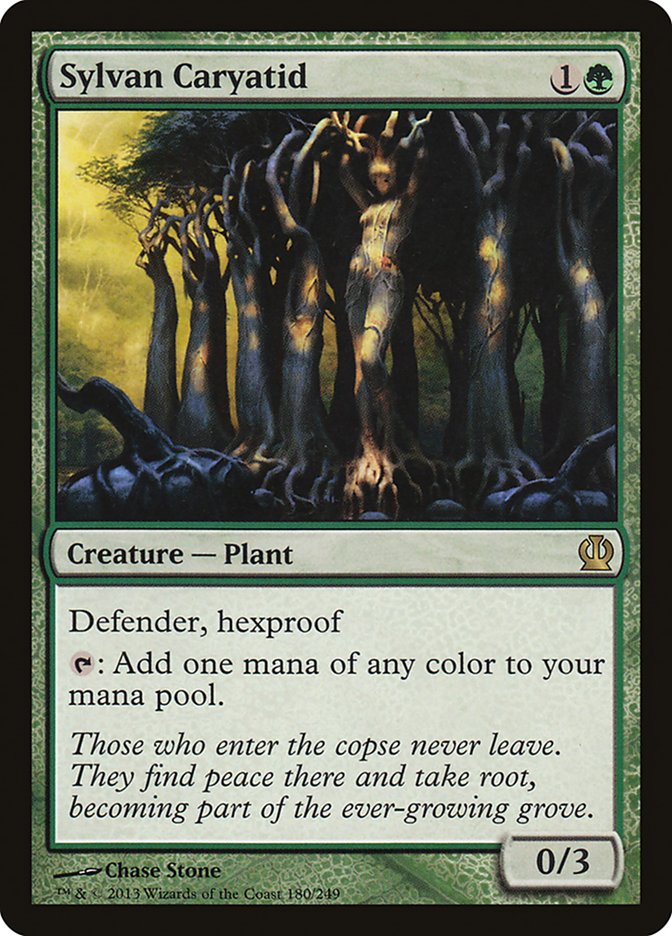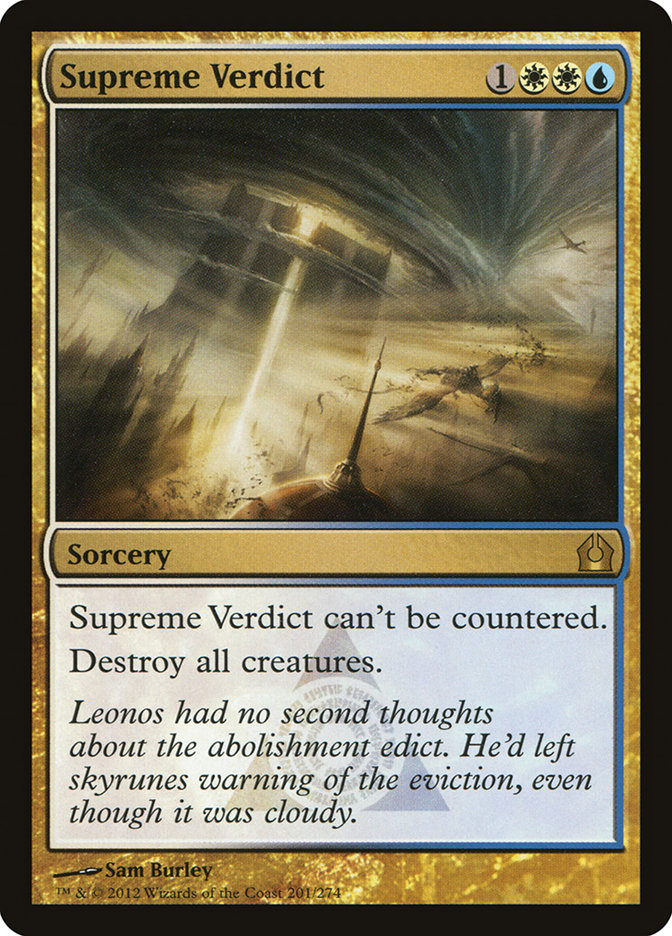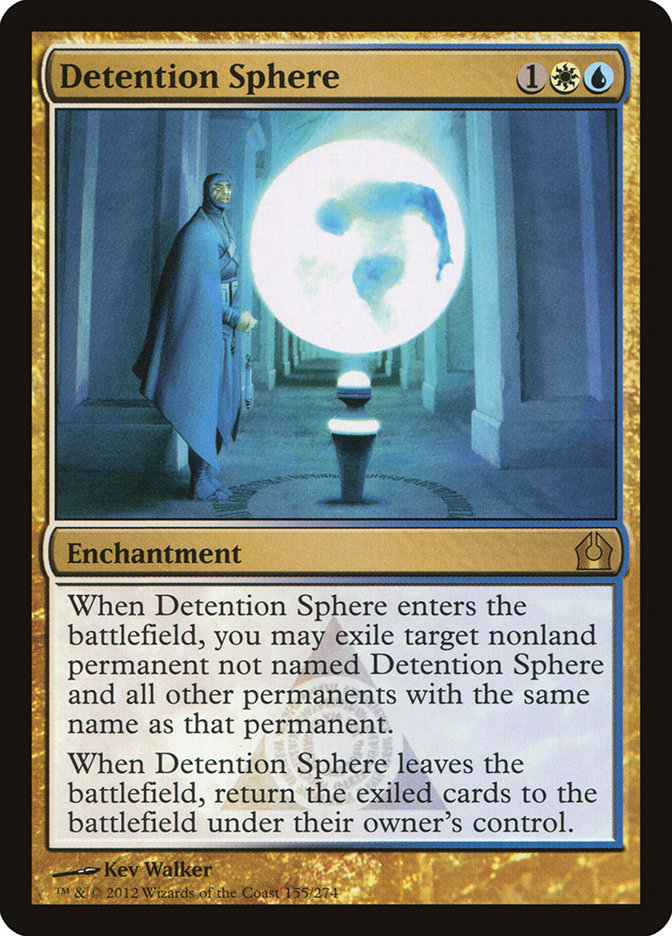Seven days spent in a secluded castle in the Irish countryside. Dozens of decks, hundreds of ideas, and thousands of games. Even after all of it, I was only able to register a single Standard deck to play at Pro Tour Theros.
However, not a minute of the time spent in the castle was wasted. Though many of the decks we tried may never see the light of day, they all contributed to an overall understanding of the format that I’m confident will prove valuable long after the Pro Tour. Today my goal is to share my experiences in testing Standard and to try my best to offer a general overview for anyone just getting into the format.
Mana
In my initial attempts to port old Standard decks (the ones that included Innistrad block and M13), the mana in new Standard came as a rude awakening. Scry dual lands are not the same as the M13 dual lands, and they don’t even exist for every color combination!
Three-color mana bases are extremely demanding and should not be undertaken lightly. Three-color aggressive decks like Naya suffer both in terms of inconsistency and in having their lands come into play tapped a huge portion of the time. If you’re willing to pay these costs, the deck can still work—but only because it happens to be a combination with access to two scry lands.
Some three-color combinations that I personally worked on include W/G/U, W/G/B, and G/R/B. These combinations only have one scry land and lend themselves to slightly slower strategies, so I faced an even greater challenge in making their mana work. The quality of being slower is important because it means that these decks must necessarily be positioned defensively against faster decks like Mono-Red and Mono-White Aggro. In these matchups, you cannot afford to take too much damage from your shock lands, but you also cannot afford to play off curve.
I played countless games that went like this. Mono-Red Aggro leads with Mountain and Rakdos Cackler. I play a tapped Golgari Guildgate. Mono-Red plays Mountain, Burning-Tree Emissary, and another creature. I draw a card and look at a hand of Temple of Silence; Temple Garden; Overgrown Tomb; Doom Blade; Hero’s Downfall; Scavenging Ooze; Read the Bones; and Obzedat, Ghost Council.
I can Shock myself to Doom Blade a creature and then probably have to Shock myself again the following turn in order to play my next spell. Alternatively, I can play a tapped land and then try to Doom Blade next turn and play another tapped land, but then I end up taking two damage per turn from each creature that I wait to kill anyway! These games felt truly hopeless—not because of my spells but because of my lands.
Scry Lands
All that said, it’s important to point out that the scry lands are excellent—truly a different animal from the unexciting Guildgates. A direct comparison to other dual lands is difficult to make since their power hinges a lot on the pace of the game that you’re playing. (I would rather add a Temple of Deceit than an Underground Sea to my next M14 Sealed Deck pool, but clearly you would never make that choice in your Legacy deck). Simply put, the fact that they always come into play tapped reduces the power of your absolute best draws, but the scry ability raises the floor for how poorly your deck can perform with an awkward draw. Some players at Pro Tour Theros elected to play off-color scry lands in their decks just for this consistency!
At first, I was taking it for granted that I should always max out on shock lands, then move on to scry lands, and then play Guildgates if that wasn’t enough. But then Patrick Chapin brought up the idea that scry lands could actually be better than shock lands in the right deck when he proposed an Esper list that would play all eight of its available scry lands but not necessarily max out on shock lands.
In the end, I concluded that there are only two types of decks for which I am willing to construct a three-color mana base. The first is a very slow controlling deck, such as Esper or W/R/B, which plays a very high land count, can afford to play off curve, and makes great use of the scry lands. Guillaume Wafo-Tapa Esper deck simply played all twenty of the available dual lands! The second type of deck is a ramp strategy that employs green mana fixing to ease the negative effects of the three-color mana base.
Sylvan Caryatid
It’s funny how you don’t fully appreciate something until it’s gone. I always loved Farseek, but I loved it for the acceleration, for the ability to skip straight to my powerful plays. What I didn’t fully realize was how important it was for color fixing. If you had a Forest and a Farseek in your opening hand, you hardly had to worry about casting even the most demanding of colored spells.
I was slow to adopt Sylvan Caryatid because of the way it dies in the collateral damage of a Supreme Verdict. However, after my mana frustration came to a raging boil, I started adding Caryatid to my decks and never looked back. Not only does the card functionally approximate Farseek, but it’s actually a remarkable defensive tool as well. Mono-Red Aggro cannot remove it or push through it with Firefist Striker, so it effectively serves as a full removal spell while also accelerating you and fixing your mana. The fact that it does all of this while not turning on opposing Doom Blades and Lightning Strikes really makes it an excellent card.
Colorless Value Lands
What I have not yet touched on is the loss of Kessig Wolf Run, Gavony Township, Nephalia Drownyard, and their whole family of colorless lands. These lands provided a different form of consistency, allowing decks to play higher land counts by always offering something to do with excess mana. Old Standard Jund typically played 30-32 mana sources, and this was possible in large part because of Kessig Wolf Run. Without such a land, midrange decks either should not play quite as much mana or must be sure to have an adequate amount of late-game power and card advantage.
Mutavault, while perhaps an equally good card, is not exactly comparable to Wolf Run. Mutavault is not really a mana sink, and an extra 2/2 body is not likely to swing a game for a more controlling deck. Combine that with the worse mana in new Standard and you have a card that does not really belong in three-color decks.
That said, I consider Mutavault to be an absolutely colossal reward for staying monocolor. In my most recent article, I claimed that Mutavault was "the best card in Mono-Red Aggro." Indeed, four Mutavaults was the real selling point that convinced me to play Mono-Blue Devotion at the Pro Tour. This card greatly increases both the quality and consistency of your deck in addition to being one of the best ways to fight against planeswalkers and board sweepers.
Control Decks
Throughout our testing, beating blue control decks was a top priority for most of our team. At the Pro Tour, U/W and Esper Control combined to be about fifteen percent of the field. Despite being the most played archetype by a thin margin, I actually feel that blue control was underrepresented at the tournament and will prove to be one of the major players as we get deeper into the Standard season.
Creatures (12)
Planeswalkers (5)
Lands (26)
Spells (17)

Bant Control was my blue deck of choice in our Pro Tour testing. I very much liked the way that Voice of Resurgence and Sylvan Caryatid offer proactive early plays and an extra layer of defense against Mono-Red and Mono-White Aggro.
However, the reality is that Bant is only one of many possible ways to build control. Whatever you choose for your third color (if any), the most important reasons to play control are found in blue and white.
Supreme Verdict
When you look through the list of Standard-legal cards, you find a collection of some of the absolute best midgame creatures that have ever been printed. Think about Archangel of Thune; Desecration Demon; Blood Baron of Vizkopa; Kalonian Hydra; Stormbreath Dragon, Polukranos, World Eater; Scavenging Ooze—the list that goes on and on. Despite stretching through all five colors and having a huge variety of game-changing abilities, these creatures have one thing in common—they’re all awful against Supreme Verdict.
Old Standard featured a number of cards and mechanics with built-in resilience to Supreme Verdict. Two popular cards were Thragtusk and Blood Artist. Beyond that many of the most-played creatures had either undying, regeneration, indestructibility, flash, or haste. At certain points in the history of old Standard, I would have referred to Supreme Verdict as "just plain awful."
Now all of those things are gone, and there are very few ways to build a creature deck to be resilient against board sweepers. I’ve already covered the fact that Farseek has been replaced by Sylvan Caryatid; when you lose your threats and your mana at the same time, it can be impossible to quickly recover from a Supreme Verdict! The five Gods, though they will not die to Supreme Verdict themselves, can only be played in "board presence" decks that tend to be demolished by a sweeper. In my experience, many games with decks like Mono-Red Aggro, Mono-White Aggro, Devotion, and R/G Aggro will simply come down to a win if the opponent doesn’t draw Supreme Verdict and a loss if they do.
Detention Sphere
You know what card does answer the Gods? You know what card takes care of planeswalkers, enchantments, creatures, and—oh yeah—everything?! Detention Sphere is an incredible card, and I found the combination of Supreme Verdict and Detention Sphere to be very difficult to combat out of control decks.
Personally, I’m obsessed with being able to blow up Detention Spheres. My white decks sideboarded Glare of Heresy, my R/G decks sideboarded Destructive Revelry, and I experimented with a variety of strategies that could make use of Ratchet Bomb. However, what I really wanted was to play with Abrupt Decay and Golgari Charm.
These cards both have a variety of extremely useful applications in Standard that I won’t go through right now, but I felt that being able to destroy a control opponent’s Detention Spheres opened up a whole new angle of attack. It made planeswalkers and Underworld Connections a real game plan and meant that they had to be constantly afraid of you freeing up your threats at instant speed as the game dragged on.
I believe that control decks will be a constant concern in Standard and that having a good game plan against both Supreme Verdict and Detention Sphere will be critical.
Creatures (17)
Planeswalkers (1)
Lands (25)
Spells (17)

This Junk deck was one of my favorites in testing. In gameplay, it resembled the B/W Midrange deck that Paul Rietzl and Patrick Chapin piloted to top finishes at the Pro Tour. However, the third color offered access to some powerful green creatures and the Abrupt Decay and Golgari Charms that I so loved. The Selesnya Charms are a retrospective addition as a way to exile the Gods, which are sure to be key features of Standard from here on in.
Devotion Decks
It wasn’t until late in our testing that we identified the power of Nykthos, Shrine to Nyx. Our original theory was that it would be a card that was powerful in the games that we were already winning but would also make for awkward opening hands. After all, it’s not easy to start putting extra colorless lands in decks featuring Nightveil Specter or Boros Reckoner.
The reality is that Nykthos is good enough to take on the risks of playing with a colorless legendary land. The red and green Devotion decks that featured Burning-Tree Emissary and lots of powerful mana sinks played four copies! In our Mono-Blue Devotion deck, we played it as a singleton, but in retrospect we could probably have had two or three, with the extras being either maindeck or sideboard. (The explosiveness of Nykthos is a key to winning Devotion mirrors).
Creatures (29)
- 4 Judge's Familiar
- 4 Frostburn Weird
- 4 Cloudfin Raptor
- 4 Nightveil Specter
- 4 Tidebinder Mage
- 4 Thassa, God of the Sea
- 1 Omenspeaker
- 4 Master of Waves
Planeswalkers (1)
Lands (25)
Spells (5)
Sideboard

Another primary reward for building around devotion is the Gods. Thassa, God of the Sea, with her modest mana cost and powerful passive abilities, is the best of them. It was never in question that we would play four copies of Thassa, and it’s one of the few cards of which I never sideboarded out a copy.
Finally, there are the enters-the-battlefield creatures. Master of Waves is an unbelievable card; its presence alone changes many matchups from close or unfavorable to huge blowouts in favor of Mono-Blue Devotion. It’s very common to add fourteen or more power to the board with one card, and in one game at the Pro Tour I made fifteen tokens with one Master of Waves!
Other players have found Gray Merchant of Asphodel and Fanatic of Mogis to be great reasons to build around devotion as well.
I’ve been asked whether I would classify Mono-Blue Devotion as "aggro" or "control," and the answer is neither. Although the deck does play cheap creatures and attack the opponent’s life total, games will seldom be decided by nickel and diming damage with Cloudfin Raptors and Tidebinder Mages. Instead, I would classify Devotion as a "board presence" deck, most similar to a strategy like Mythic or Tokens.
As is traditionally the case with such decks, Devotion is quite strong against opposing creature strategies and struggles the most against decks that can prevent it from hitting its critical mass of mana, cards, or permanents. The weaknesses that exist in Standard are control decks with Supreme Verdict and Detention Sphere and black decks with lots of Thoughtseizes and Doom Blades.
Wrapping Up & Moving Forward
Despite the dominant Pro Tour performance of Devotion in general and Mono-Blue in particular, I don’t believe that Standard is a "solved" format or will stagnate in any way. There are still countless strategies to explore and a number of ways to combat these powerful Devotion decks.
Moving forward, keep an eye on blue control, on black midrange decks, and on two- and three-color strategies featuring Sylvan Caryatid. And, of course, have a plan for fighting against Mono-Blue Devotion.
Personally, I’ll be heading to Grand Prix Louisville this weekend, and I’m excited to see what that tournament and the next few weeks of StarCityGames.com Opens bring to the table in Standard.



